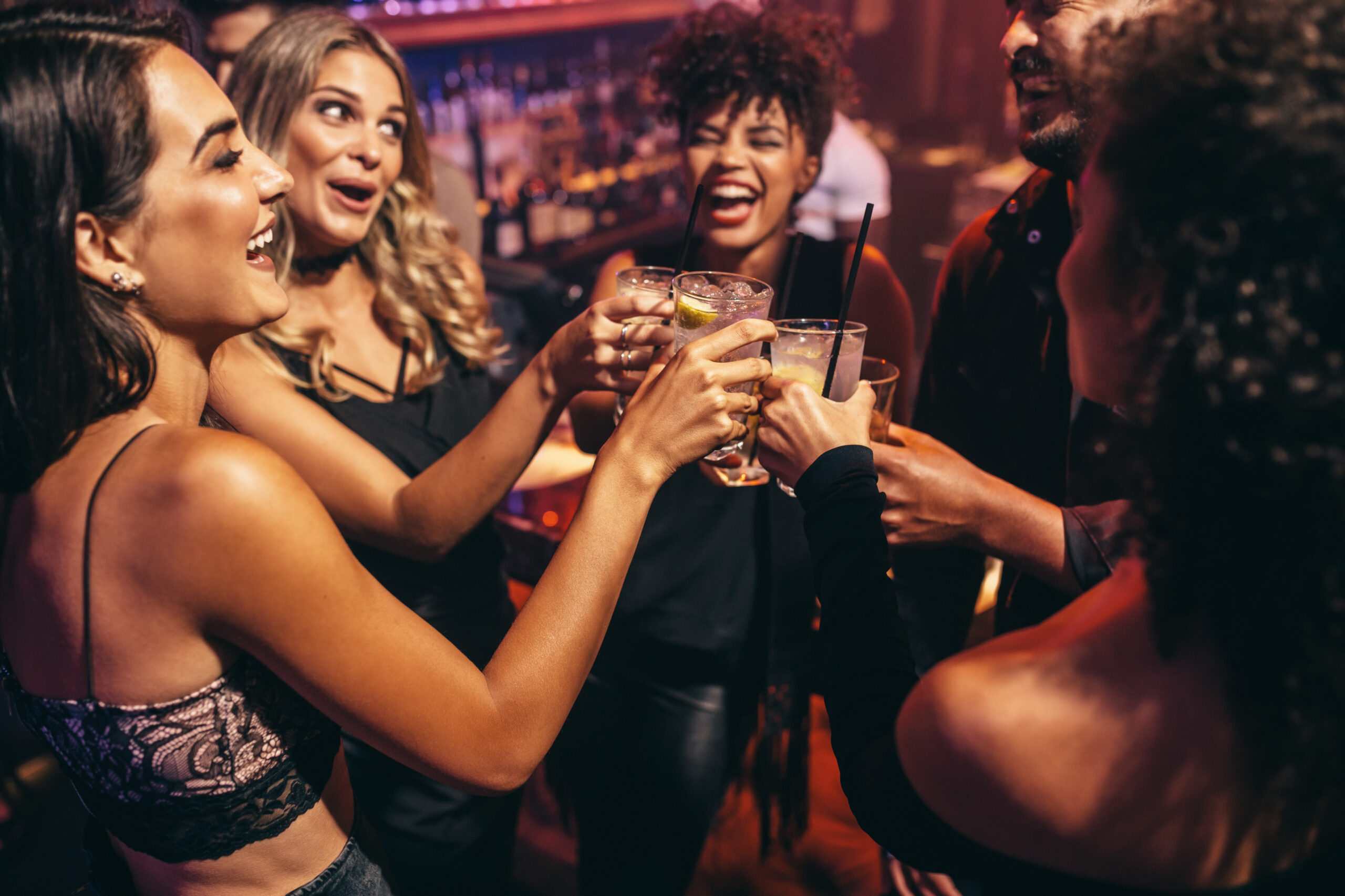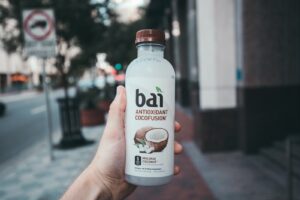How booze can be blocking your fitness goals
By now you must know that I am not afraid to take on touchy subjects. I feel that with an audience of mostly working professionals, we gotta talk about alcohol. And the timing is just right. Alcohol is a significant thread in the fabric of socialization. We will soon be back to the days of raising a glass, of wining and dining clients, and of team happy hours.

Why even moderate alcohol may be why you are hitting a wall
Alcohol is probably one of the top, if not the top reason you keep hitting the wall you are up against.
Weight loss, weight management, and fitness are difficult enough considering the confines of a sedentary, now often stay at home, corporate job. Throw alcohol into the mix, and you have a formidable opponent. You don’t have to take an oath of abstinence to reach your next level fitness. But you do have to accept that even drinking “in moderation” can really just obliterate all the hard work you are doing otherwise.
With this in mind, let’s explore what role alcohol does have in weight management. I am not the first person to write about this topic, for sure. I drew a lot of inspiration for my research from Mike Matthews’ book, Thinner Leaner Stronger. Most trainers would agree that the number one deterrent that they see for their clients’ goals is not the occasional “cheat meal” or inconsistent training – it’s the ever-present saboteur of alcohol. But why is this? Let’s examine the factors.

Factor #1 – The extra calories from alcohol
Remember my post on reading nutrition labels? Well most alcohol bottles won’t give you much help there. You also can’t really get a reading on mixed cocktails so you are in the dark. But there is information out there and it’s shocking.
When you order a shot of liquor it is typically a pour of an ounce and a half, maybe more because bartenders want tips and will give you closer to a double shot. So that is about 90-120 calories just for the shot of alcohol. That’s before you mix it with anything.

Now let’s look at the calorie content of some typical drinks:
- Apple Martini-235
- Regular Martini – 170
- Vodka Martini – 200
- Gin and tonic- 125 calories
- Bloody mary -400
- Old fashioned (this is a very DC drink)-151 calories
(you can get most of this info at https://www.calorieking.com/us/en/)
What about Wine and Beer?

OK, so you think, wine is better. Especially red wine…because it’s good for your heart, right? Well there is some truth to that – red wine contains polyphenols which have antioxidant effects and open up your blood vessels. But those exact same polyphenols can be found in almonds, walnuts, berries, and dark chocolate. So drinking red wine just for that reason is kind of lame.
Calorie-wise, a “normal” glass of red wine is about 150-180 calories. On many websites you will find that the calorie count is listed at around 120-130, but that’s for a measly 5 ounces of wine. And I know very few people outside of my mother who drink that little amount of wine. To put in perspective, 5 ounces of wine will not even fill up a tall sized Starbucks cup halfway. And if you are filling up that big goblet glass close to the brim, you could be looking more at 200-300. White wine’s a little better but not much. Because it usually has lower alcohol content, it’s about 5-10 calories less a glass.
Champagne and rose have about 95 calories per 4 ounces, which is usually the amount you can pour in a flute with all the bubbles.
A pint of beer is about 215 calories, about the same as a snickers bar. And since it can take drinking a few beers to get a buzz, you do the math.
So unless you exercise restraint and moderation, with even just 2-3 drinks, you could be ingesting 300-800 calories for that day. And say you only drink on Fridays and Saturdays when the week is over – that’s easily a couple of thousand extra calories. And it’s not that moment in time that matters. Like most aspects of fitness, this is cumulative. So let’s say to be on the conservative side it’s 900 extra calories a week. That is 3600 extra calories a month. As you probably know, consuming about 3500 calories in excess of what you need causes a pound of weight gain. So that could add up to 12 pounds a year!
Factor #2 – The munchies
So you may be thinking, just eat less to make up for the extra calories, right? Or better yet, drink on an empty stomach to get buzzed faster and drink less? There are several problems with this approach, however theoretically it makes sense.
The first problem is that alcohol destroys your willpower. Studies have shown that people eat 30-35% more calories when they drink. One particular example is an experiment from the Truth About Alcohol documentary on Netflix . In one segment researchers from the University of Sheffield gathered two groups of college students. One group was given two pints of alcoholic beer, and the other table was given non-alcoholic beer. Both tables had bowls of chips and nuts in front of them, typical drinking nibble food. The group that drank the non-alcoholic beer ate approximately 350 calories more than the group that drank the real beer.
So perhaps it makes sense to restrict food intake while drinking? Yes but only to a certain extent. The strategy of drinking on a totally empty stomach, besides being reckless, is also basically launching a missile on your liver. Your liver has the job of processing alcohol, and when the stomach is not lined with food, that alcohol goes straight from the bloodstream to the liver and other organs, including your brain. So yeah, you will feel the effects more and faster – but also a lot more likely to make dumb decisions, like order that second or third drink and then those nachos from Taco Bell later.
You can use food for you not against you when it comes to drinking. TBy coating your stomach with food, the alcohol absorbs more slowly and won’t go straight to your head. A stomach already lined with food can also “pitch in” with extra digestive enzymes so the liver doesn’t have to do all the work. If you aren’t attuned to the fact that caring about your liver is important you must be under 25. It is an organ that needs to be treated nicely after the age of 30, because liver disease even in moderate drinkers is growing more and more common, according to a study done by the Cleveland Clinic. That can happen with as little as two small glasses of wine a day for women.
So bottom line from factor #1 and #2 – drink as infrequently as possible and no drinking on an empty stomach.
The way you eat when you are hungover
Factor #3 – Alcohol converts carbs into fat faster.
Mike Matthews points out in his book, Thinner Leaner Stronger, that alcohol accelerates the rate at which your body stores fat. This is because alcohol inhibits fat oxidation which increases the conversion of carbs to fat. Also, you aren’t getting any nutrients or other benefits. Alcohol is purely “empty calories”, which means you won’t feel satiated or nourished afterwards so your body will inevitably want some other form of calories.
The bottom line: Therefore, alcohol on its own and in combination with the food behavior patterns it encourages can definitely contribute to weight gain and stunt fitness efforts.
A possible compromise
I can’t tell you how much you should and shouldn’t drink- there is definitely support that a light alcohol consumption can actually have some health benefits. But if dramatic changes to your physique are a goal, then I would agree with Mike Matthews that it is best to limit drinking to 1-2 drinks one day a week. Matthews also advises on the same day to lower carb and fat intake, and increase protein intake.If you are tracking your intake like I recommend in the DAO of metrics, you would be able to easily adjust based on your target calorie/macro goal.
Application to different situations
In all of these situations, there is a two letter word that can naturally regulate your drinking: Designated Driver. But if you are walking or Ubering, or staying in a hotel, you have to be more vigilant. Here’s some tips for various social situations that are coming up for people soon.
Happy hours
Bars in many states will be opening this month, so this means happy hour! If you know about this in advance, choose this as your day to have two drinks. Start with a club soda so you are hydrated and will be on the first drink by the time others are on your second. For drinks, Matthews recommends sticking to dry spirits or wine. So for example, a vodka club soda is a better choice than a mixed cocktail. Note to specify club soda, NOT tonic, because that packs extra calories in sugar.
If you happen to go to a Happy Hour and do not want to partake in drinking, no obligation to explain. One thing I find helpful is to go to the bathroom when everyone orders drinks and then just get a club soda on your way back from the bar.
Weddings
Tis the season for delayed COVID weddings. Especially if you are in the wedding party or a close family member, these are long days. You don’t want to be that one person who got drunk at Cousin Sally’s wedding and have Uncle Ron remind you about it every time for the next four decaudes.
So think in the long haul, and hydrate! Decide whether your “20” that night will be the drink or the wedding cake. And in both cases, delay. The cake is already at the end of the night, and you can have a few sips of champagne for the toast. If you choose to drink, delay your drink as long as possible to when dinner is served and stick to wine. Make as much of an effort to mingle and talk to people, and have something in your hand so you don’t feel awkward, like a clutch, your phone, or a program guide.
Also, dance! It burns calories and hard to do with a drink (unless you get too tipsy and are that person dancing and sloshing away – not cute).
Restaurant dinners
When sitting down to dinner and the waiter comes and asks you what you would like to drink, opt to order a bottle of sparkling water and then ask to see the wine list. Then busy yourself with finalizing your food menu choice and then if you do decide to have a drink, order wine by the glass or a similar dry spirit drink. If there are 3 people or less, don’t order a bottle.
At home
In general, try to avoid keeping alcohol in the house. People rarely have unannounced guests so you have no reason to keep it around. It’s just going to be too easy of a reach for stress relief after a hard workday. Plus, you have both the fridge and the booze, so you will be totally susceptible to binge watching with wine and cheese in your yoga pants. If you want something to look forward to at the end of the day, plan a walk with a friend, a yoga class, or a guilty pleasure streaming show on Netflix/Hulu/Prime.
Alcohol and mental health
There is also an undeniable correlation in the professional services environment between the mental health challenges both men and women are facing and excessive drinking. In a 2020 study by the California Lawyers association and the DC bar, there was a direct correlation between the decline in mental health during the pandemic and drinking behavior. The study found that roughly half of practicing attorneys are experiencing symptoms of depression and anxiety, with approximately 30% of those falling in the mild range and nearly 20% falling in the moderate-severe range. Over half of the attorneys screened positive for risky drinking, and 30% screened for high-risk hazardous drinking (which is interpreted as alcohol abuse or possible dependence). In particular, the study found that women are experiencing meaningfully worse mental health than men and are drinking more hazardously.
I will leave the above issue to the mental health professionals – except to say that if you are struggling with your mental health or drinking, you are not alone and there are a lot of resources available to help. I have enclosed some links at the bottom of this article.
Alcohol and Drug Addictions .Org Website
Helping someone with a drinking problem (with resources and numbers to call on the back)






